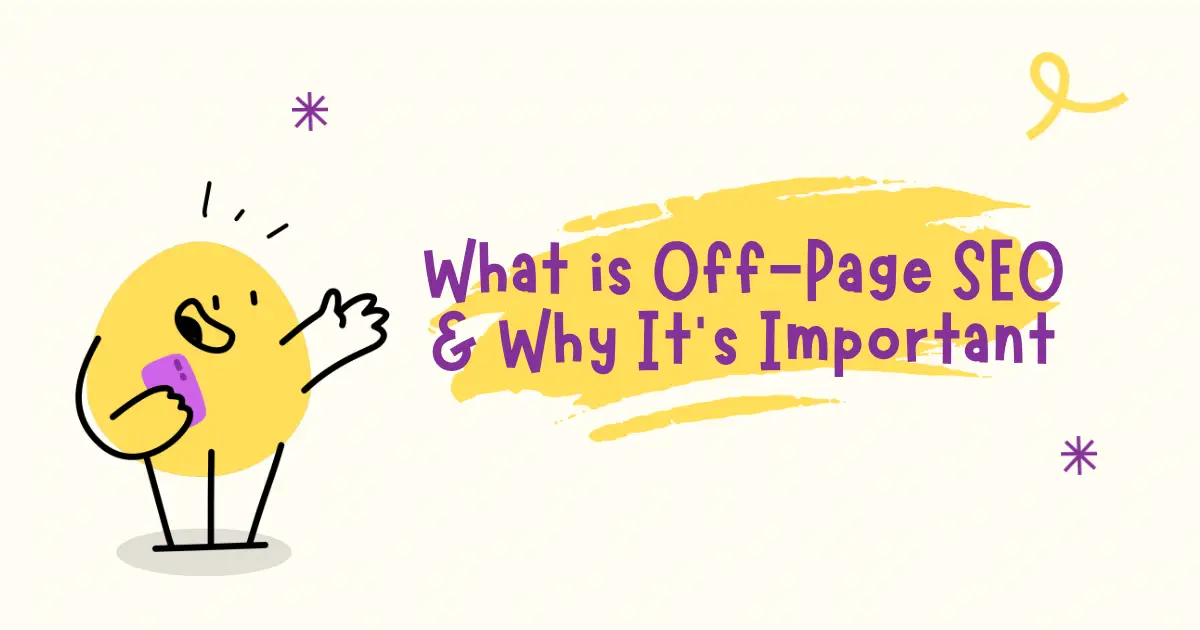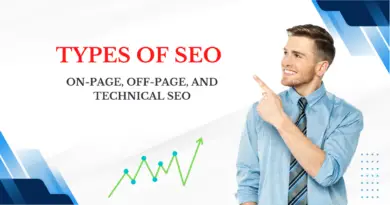What is Off-Page SEO & Why It’s Important
When you think of SEO, what comes to mind? For many, it’s tweaking keywords, optimizing images, and writing great content. That’s all important—but it’s only half the picture. The other half? It happens outside your website.
That’s where off-page SEO comes into play.
Understanding Off-Page SEO in Simple Terms
Off-page SEO refers to all the actions you take outside your own website to improve your search engine rankings. While on-page SEO focuses on content and structure within your site, off-page SEO is about building authority, relevance, and trust—mostly through links and mentions from other websites.
It’s like a reputation system. If other trustworthy sites talk about you or link to you, search engines assume you’re valuable too.
Why is Off-Page SEO So Important?

Search engines want to serve users the best possible results. So, they look for signals that show your website is credible, useful, and popular. Off-page SEO provides those signals.
Here’s why it matters:
Boosts domain authority: More quality links = more trust in your site.
Improves ranking potential: Strong off-page efforts help you rank higher on Google.
Drives referral traffic: Backlinks from high-traffic websites send visitors your way.
Builds brand awareness: The more your site appears across the web, the more familiar people become with your brand.
Without off-page SEO, even the best content may struggle to rank.
How Does Link Building Impact Off-Page SEO?
Backlinks are the backbone of off-page SEO. A backlink is simply when one site links to another.
But not all backlinks are equal.
Let’s say you get a link from a small blog. That helps, but a link from a trusted site like Forbes or HubSpot? That carries much more weight.
Here’s how backlinks help:
They act as votes of confidence.
They pass link equity (also called “link juice”) to your site.
They show Google you’re connected to a broader topic network.
What Makes a Quality Backlink?
Relevance: Is the linking site in your industry?
Authority: Does the linking site have a high domain rating?
Anchor Text: Are the clickable words relevant to your content?
Natural Placement: Is the link contextually placed, not forced?
Poor-quality backlinks—especially from spammy or unrelated sites—can hurt more than help.
Best Off-Page SEO Techniques to Focus On
You don’t need hundreds of tactics. Focus on a few solid ones that consistently work:
1. Link Building (Ethically)
Guest blogging: Write articles for other reputable blogs in your niche.
Broken link outreach: Find broken links on other sites and suggest your content as a replacement.
Competitor backlink analysis: See who links to them, and try to earn similar links.
Example: A marketing blog links to your SEO case study. That brings both authority and referral traffic.
2. Social Media Signals
While not direct ranking factors, social media shares help get your content noticed. The more it’s shared, the more likely it is to attract links.
Post consistently, engage with users, and join niche groups to build visibility.
3. Influencer & Brand Mentions
Even unlinked brand mentions can build trust. If influencers or industry leaders talk about your brand, it signals authority to both users and search engines.
Example: A well-known SEO expert mentions your blog post on Twitter. It might not be a backlink, but it raises your brand profile.
4. Online Reviews and Citations (Especially for Local SEO)
If you run a business, Google reviews, Yelp, and industry directories help build local visibility. Consistent Name, Address, Phone number (NAP) details are crucial.
5. Forums and Q&A Participation
Engaging in communities like Reddit, Quora, or niche forums can help you:
Share expertise
Link (sparingly) to your resources
Build trust with a targeted audience
Just make sure your input adds value. Don’t drop links randomly.
Difference Between On-Page and Off-Page SEO
Understanding the difference clears up a lot of confusion.
| Feature | On-Page SEO | Off-Page SEO |
|---|---|---|
| Focus | Inside your website | Outside your website |
| Examples | Keywords, meta tags, internal links | Backlinks, social signals, brand mentions |
| Control | Fully within your control | Influenced, but less control |
| Tools Used | Yoast SEO, SEMrush, Screaming Frog | Ahrefs, Moz, BuzzSumo |
You need both to succeed. On-page builds a solid foundation. Off-page earns you authority and attention.
Are Social Media Signals Part of Off-Page SEO?
Yes, but with nuance. Google has said social signals (likes, shares) don’t directly impact rankings. However, their indirect effect is huge.
When your content performs well on platforms like LinkedIn or Twitter:
It gets seen by more people
It attracts links
It builds brand exposure
So while not a direct factor, social media definitely supports off-page SEO success.
What Tools Can Help With Off-Page SEO?
Use these tools to build, monitor, and improve your off-page efforts:
Ahrefs: For backlink tracking, competitor analysis, and link prospects
SEMrush: Similar to Ahrefs, with added outreach tools
Google Search Console: See who links to you
BuzzSumo: Discover content that’s gaining shares and links
Hunter.io: Find emails for outreach
A Quick Scenario
Imagine you’ve written a helpful guide on “SEO for local businesses.” You post it on your blog, share it on social media, and pitch it to a few marketing forums and bloggers.
A local SEO consultant shares it on Twitter
A business directory links to it in a blog post
Someone mentions your site in a Reddit discussion
None of this happened on your site. But it boosts your visibility, gets you traffic, and improves your authority in the eyes of Google.
That’s off-page SEO in action.
Common Questions About Off-Page SEO
What’s the most effective off-page SEO strategy in 2025?
Still—building quality backlinks from trusted, relevant websites.
Can I do off-page SEO without backlinks?
You can build brand presence, get reviews, and be active on social—but backlinks remain essential.
How do I know if my off-page SEO is working?
Look for improvements in:
Referral traffic
Domain authority (via tools like Moz)
Keyword rankings
Backlink growth
Is guest blogging still effective?
Yes, if done for value—not just links. Focus on niche relevance and audience alignment.
Key Takeaways
Off-page SEO is everything you do outside your website to increase its authority and visibility.
Backlinks are a critical part of off-page SEO—but not the only part.
Building relationships, earning mentions, and being active in your niche helps search engines trust your content.
Use a mix of strategies: guest blogging, social media, influencer mentions, and online reviews.
Don’t try to cheat the system—focus on adding real value to your niche.
Final Thoughts
Off-page SEO might seem out of your control, but with consistent effort and smart strategies, it becomes a powerful asset.
Focus on building relationships, earning trust, and creating content that others want to reference. Search engines notice—and reward you for it.


